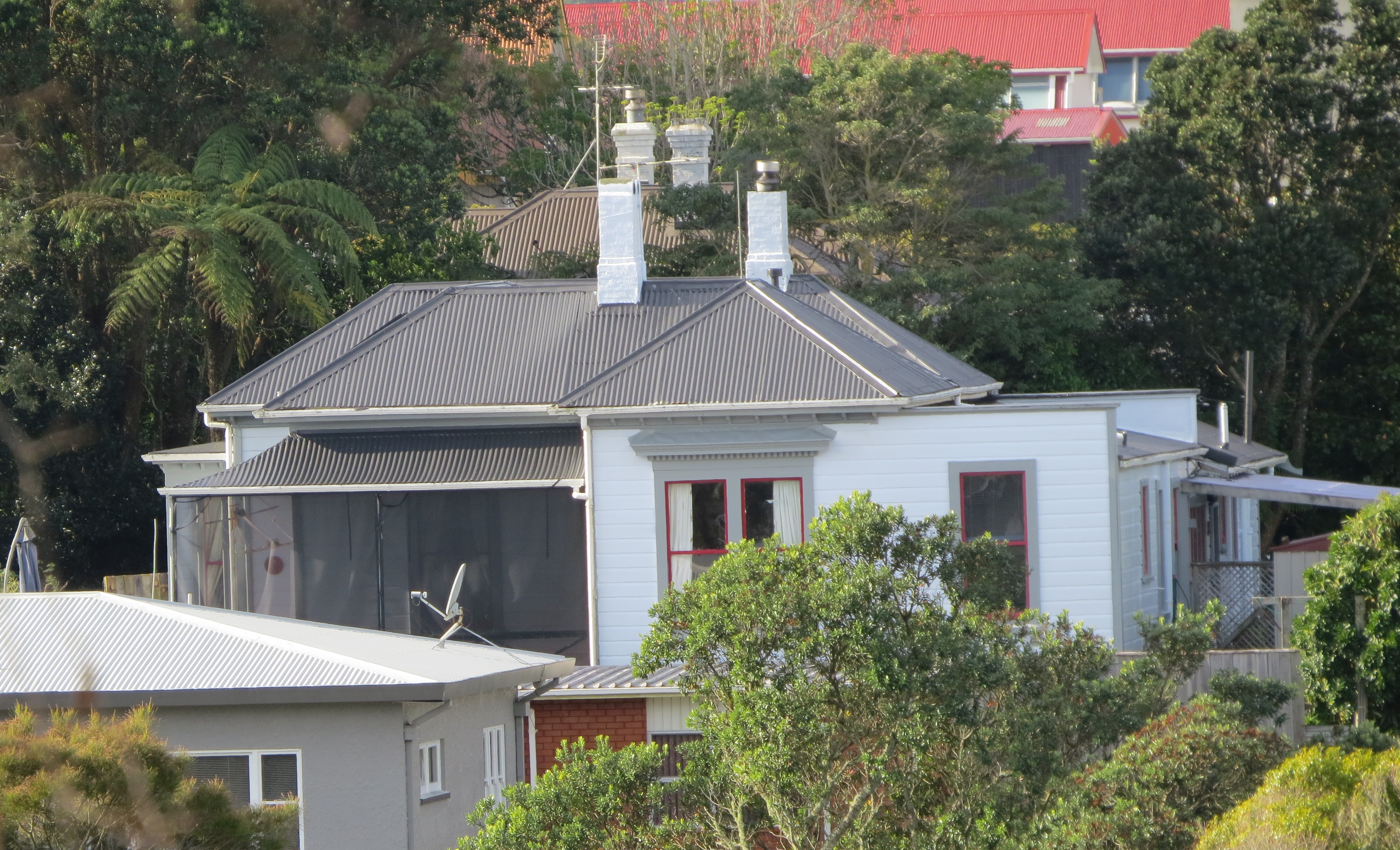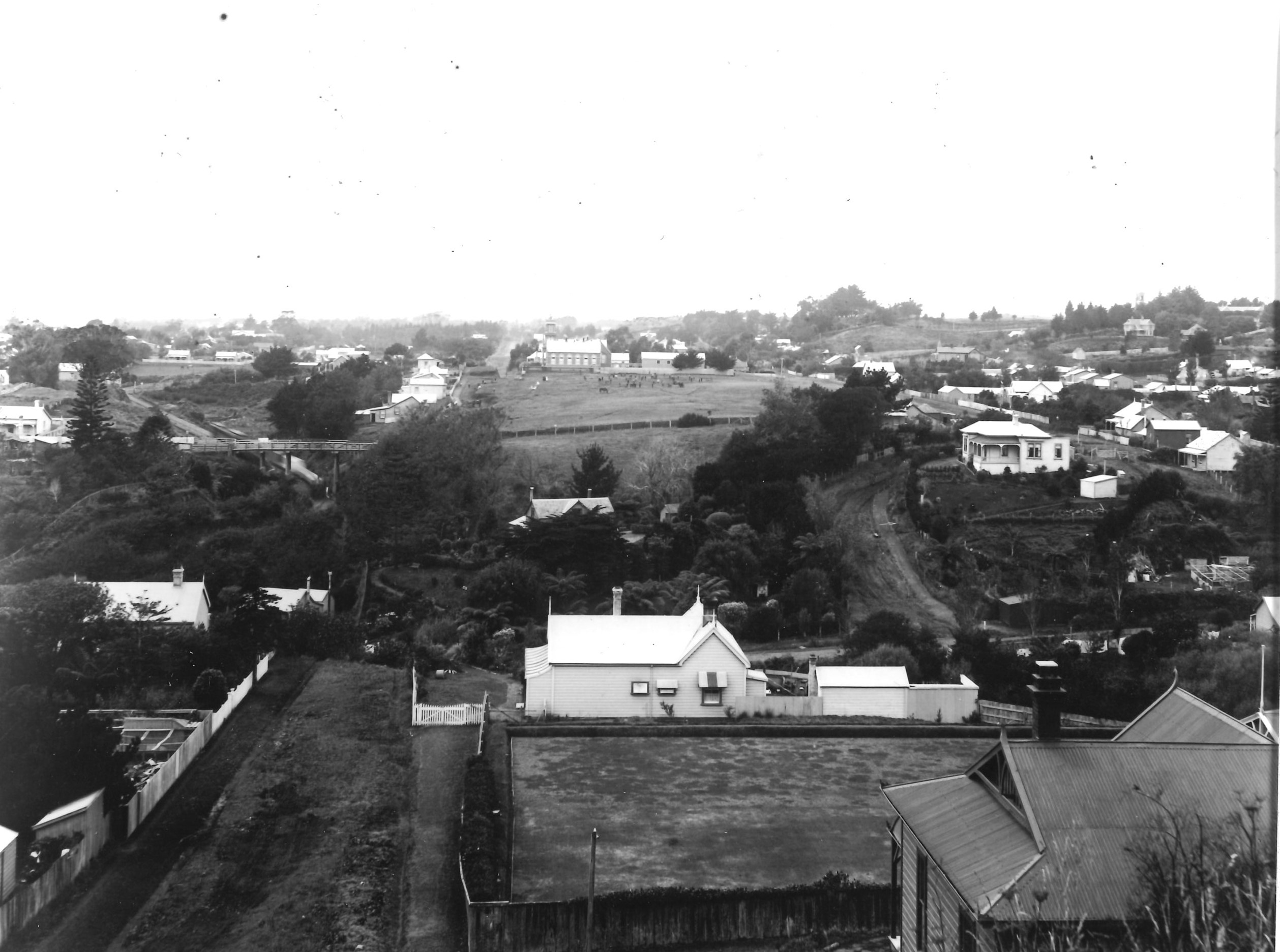



Part Town Section 1009, Town Section 1010 and Part Town Section 1011 (along with sections 1024, 1025, 1044 and 1045) were purchased by land agent W. J. Spurge in February 1894, seemingly for the purpose of on-selling. On 18 August 1894 it was reported in the Taranaki Herald that Mr Bewley had sold “Mr Spurge’s town sections 1009, 1010, and 1011 to Mr H. Goodacre; and sections 1025, 1045 to Mr W. Shephard”. Whilst the sale to Shephard was completed, the transaction to Hal Goodacre did not proceed, with no evidence in the Deed Register of Goodacre ever purchasing the property. However, the following month, on September 4 1894, Part Town Section 1009, Town Section 1010 and Part Town Section 1011 were conveyed from Spurge to the Rev. William Drew.
The Rev. William Drew, along with his wife and grown-up children, emigrated to New Plymouth from England in 1893. The Drew’s were encouraged to emigrate to New Zealand during one of local businessman William Courtney’s lecturing missions to the United Kingdom to recruit new emigrants for Taranaki. Although Courtney’s work has received little attention from historians, he completed at least thirteen lecturing trips to England and induced more than one thousand persons to emigrate to New Zealand.
William Drew was a Baptist Minister, whilst the couple’s children, one son and two daughters, were certified teachers. They travelled to New Zealand aboard the Tongariro, arriving at Wellington on 4 October 1893, before taking the Takapuna to New Plymouth, arriving on 6 October. It seems the Drew family were only intending to stay in New Plymouth for a short period before relocating to Christchurch. However, soon after arrival in New Plymouth, the Rev. Drew was offered, and accepted, a twelve-month position as Minister to the local Baptist congregation.
The early history of the New Plymouth Baptist Church is a little unclear, although it is known that the first Baptist Church was erected on the north-eastern corner of Liardet and Gill Streets in 1868 (this survived as a petrol station into the 1980s until being demolished). However, for reasons unknown, regular Baptist services never materialised and the building was instead used by the Church of Christ; it wasn’t until the arrival of the Rev. Drew in 1893 that the Baptist Church would be formally established in New Plymouth.
The Rev. William Drew first preached to local Baptists on Sunday 15 October 1893, and on Thursday 18 October was welcomed at a social gathering to which ministers from other denominations were invited to attend. At a meeting chaired by the Rev Drew on 23 October 1893, a group of local Baptists formally constituted themselves members of the Church, with Rev. Drew as their first Minister; at this time the Church also became affiliated with the Baptist Union of Churches of New Zealand.
Both Mr and Mrs Drew were strong advocates of the temperance movement in New Plymouth. Mrs Drew was especially involved in temperance activities and organisations from soon after her arrival, becoming President of the New Plymouth branch of the W.C.T.U until her resignation in August 1896 owing to ill health. Mrs Drew was replaced by her neighbour Mrs Allan Douglas, who resided in the house at present 11 Pendarves Street, at that time still located on its original site a few metres eastward.
It seems the Drew family initially resided on Elliot Road (now Tukapa Street) at Westown, with Mrs Drew advertising for a general servant at an Elliot Road address during February 1894. The exact construction date of the present house is a little unclear but was likely during late-1895 or early-1896. Drew mortgaged the property on 19 October 1895, and this may relate to the construction of the present house. Rev. Drew first appears as living in this location, under Carrington Road, from the 1896 edition of Stone’s Street Directory; it isn’t until the 1899 edition that Rev Drew’s address changes to Pendarves Street. Mrs Drew advertised for a general servant at a Pendarves Street address in late-February 1896, indicating they had likely moved into the house by this time.
The New Plymouth Borough Council Rates Book for 1894-95 notes the combined rateable value of Town Sections 1009, 1010, Pt 1011, 1024, 1025, 1044 and 1045 as just £8 and makes no mention of any house. However, by the 1896-97 rating year (the rates book for 1894-95 is missing), the value of just part Section 1011 has increased to £34 and a house, almost certainly the present villa, is now noted as being present on the property. The value of adjacent Part Town Section 1009 and Town Section 1010 is noted at just £4.
Whilst not certain, the style of the house points strongly towards Frank Messenger being the architect. Francis John Messenger was born on 4 July 1865, the second son of William and Arabella. Frank was educated in New Plymouth, and trained with local architect Henry J. T Edmonds, before moving to Melbourne, where he worked for Oakden and Kemp for ten years. In 1891, Messenger married his second cousin Lucy Messenger, before returning to New Plymouth in 1893; he commenced practice in New Plymouth the following year. Frank Messenger and Horace Victor Griffiths entered into partnership in 1917, with William Taylor joining in 1920.This partnership ceased in 1930, with Messenger and Taylor forming a new partnership; Leonard Wolfe later joined in a partnership that would last up until Messenger’s death on 11 October 1945.
Messenger’s commissions were numerous and varied, ranging from early villas to bungalows and both timber and reinforced concrete commercial premises. This house is stylistically similar to two other near-contemporary Messenger designed villas erected at 58 and 78 Pendarves Street in 1894 (Messenger’s earliest known surviving New Plymouth commissions), whilst the corner bay design, then very uncommon in New Zealand, would have been encountered by Messenger whilst practising in Melbourne.
The Rev. Drew retired in 1899, although both he and Annie remained extensively involved with the New Plymouth Baptist Church and the temperance movement. In 1903 Drew had the large property subdivided into two lots, retaining ownership of the eastern portion with house. Both William and Annie resided in the house until their deaths, William on 29 August 1921, and Annie a year later on 18 September 1922.
Following Mrs Drew’s death, the property was purchased by Herbert Cocker. A Yorkshire native, Cocker emigrated to New Zealand with his wife and two daughters in the 1890s. First working as an accountant at the Fitzroy Bacon Factory, he was later a buyer for a grocery co-operative, before going into business as tea merchant in Currie Street. In late 1904, Cocker relocated his shop to new premises (present 30 Devon Street East), which had recently been completed for owner Mr William Courtney. Cocker soon diversified his business, advertising as an importer and agent for a number of different products. From about 1908, his main business was tailoring, which he successfully pursued from the premises until his retirement in 1930.
Interestingly, like the Drew’s, Cocker was also devoted to the temperance/prohibition movement, being a member of the Independent Order of Rechabites for 53 years. Cocker was also an elder of St Andrew’s Presbyterian Church, involved in the Workers’ Educational Association, had been President of the New Plymouth Chamber of Commerce and the Taranaki Master Tailor’s Association. Herbert passed away at the house on 18 December 1950, aged 88 years. Following Cocker’s death, the house was purchased by Mrs Catherine Doris Upshall. However, it seems Cocker’s unmarried daughter Jess continued to occupy the house for a time and is listed as residing at the house in the 1955 edition of Wises Post Office Directory.
In 1970, the property was purchased by Mrs Sylvia Mavis Penny, who only retained ownership until 1973, when the house was purchased by sheet metal worker Michael Joseph Wright and his wife Sandra. The Wright’s sold the property to antique dealer Gary Albert Winther and his wife Rosemary in August 1975, before the house was purchased by Lance and Ali Girling-Butcher, in 1982. A long-time journalist and later editor of the Taranaki Daily News and Taranaki Herald, Lance was also a New Plymouth District Councillor until 2013. After blindness forced his retirement from journalism, Lance become an advocate for blindness and disability in Taranaki, being awarded the Queens Service Medal for services to the blind and seniors in 2016.
During November-December 2019 the house was advertised for sale by auction.
Related items:
Taranaki DP2188 Sheet 1 (1904), ICS Pre 300,000 Cadastral Plan Index (Imaged by LINZ)
Taranaki DP4940 Sheet 1 (1927), ICS Pre 300,000 Cadastral Plan Index (Imaged by LINZ)
Please do not reproduce these images without permission from Puke Ariki.
Contact us for more information or you can order images online here.